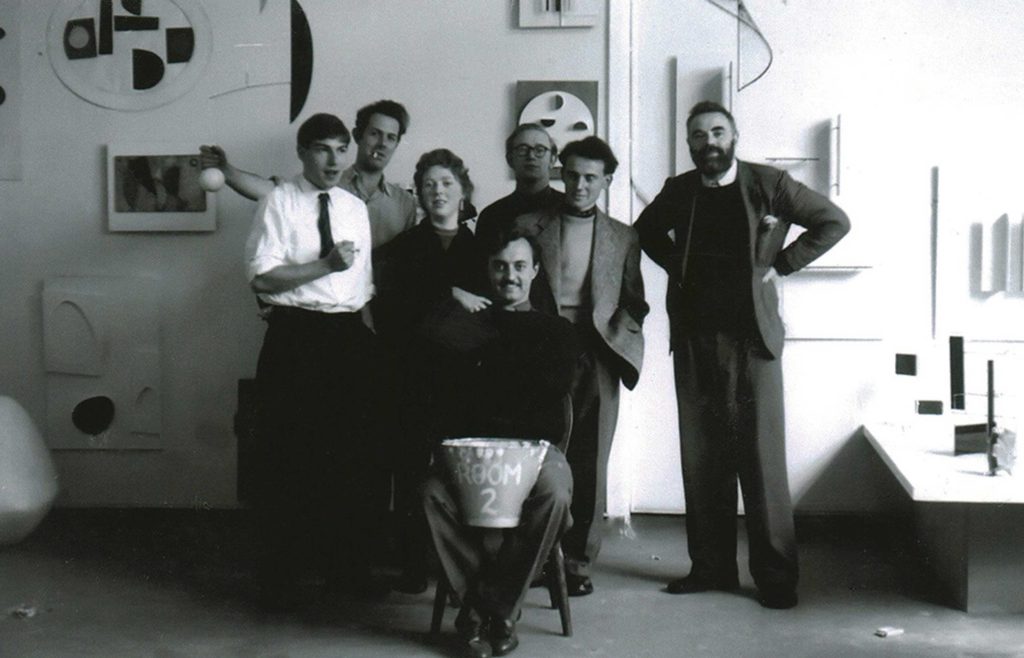In 1954, a fundamental and radical change in the teaching of fine art in England was introduced at King’s College, Newcastle, inspired by the Bauhaus principles and curriculum of Walter Gropius, the preliminary course of Johannes Itten and the exercises of Paul Klee. Known as Basic Design, this was introduced as a foundation course (the Basic Form) and was a significant departure from traditional styles of teaching, such as drawing from the model, to a more abstract, exploratory method where students were encouraged to creatively explore set tasks through process rather than seeking a pre-determined, defined outcome.
Basic Design took its origins in London with William Johnstone, Principal of the Camberwell School of Arts and later the Central School of Arts and Crafts, where significant artists and teachers were introduced to these principles, including Victor Pasmore and Richard Hamilton, who are recognised as two of the leading figures in the promotion and dissemination of Basic Design. Following appointment by the Head of Fine Art, Professor Lawrence Gowing at King’s College, who both welcomed and encouraged the new approach, they together devised the Basic Course in 1954. Students were introduced to a new curriculum based on set exercises investigating point, line, form, shape and colour, which required an intuitive, rational approach (documented in notebooks) leading to exploratory methods often involving the chance to produce more open-ended outcomes. In contrast to the Bauhaus, it did not address industry or architecture and was criticised by some for lacking the vision to integrate art on a more social level with society and its needs.
Basic Design was not confined to Newcastle. Harry Thubron and Tom Hudson at the Leeds School of Art and Wendy Pasmore of Sunderland School of Art embraced it not only in their own institutions, but also joined Victor Pasmore in educating largely secondary school art teachers at the Scarborough Summer School (1955–1957). Key texts, which explained and promoted the rationale behind it and gave examples of student work, included Basic Design: The Dynamics of Visual Form by Maurice de Sausmarez (1964) and The Developing Process, the accompanying catalogue to an exhibition of student work from the Basic Course presented at the Hatton Gallery in 1959 and later at the Institute of Contemporary Art (ICA) in London as a collaboration between Newcastle and Leeds. Basic Design continues to be visible through the works of many graduates of the schools in Newcastle and Leeds who have practiced its principles throughout their careers, propagating the pedagogy first developed at the Bauhaus.



